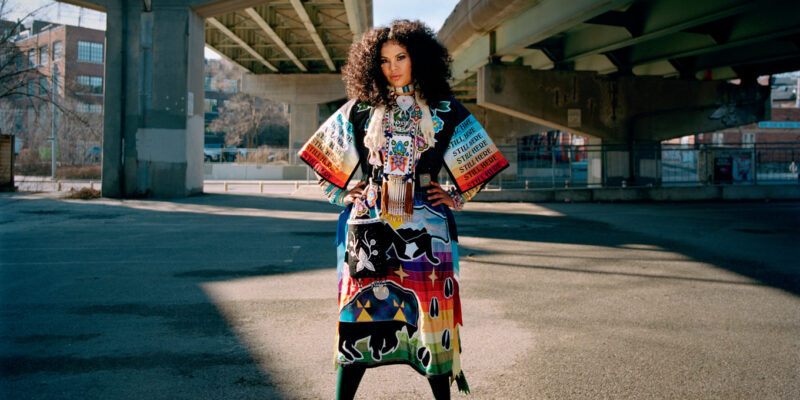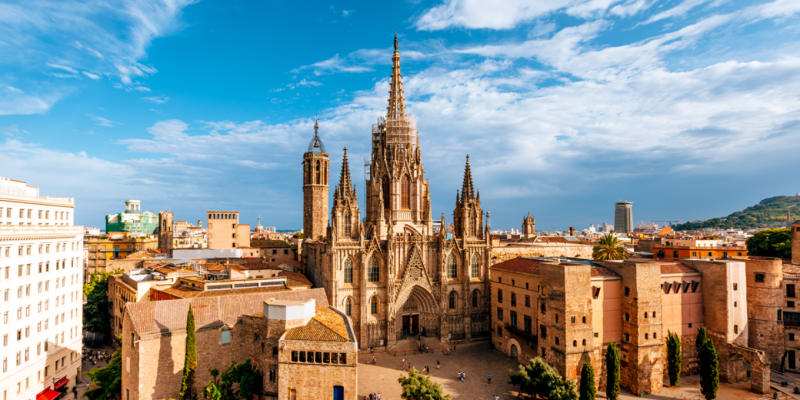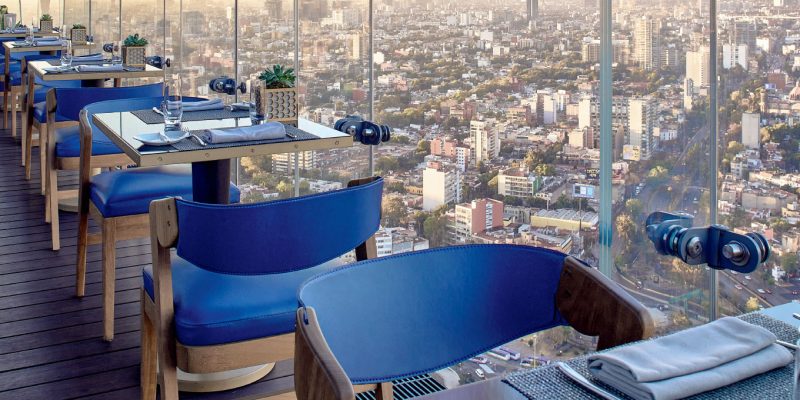Travel
Is Sustainable Travel During a Climate Crisis Actually Possible?
Our cultural horizons have broadened exponentially—but at what cost to the planet?
by : Mali Navia- Apr 22nd, 2024

Getty Images
In the early days of tourism, taking a trip was synonymous with exclusivity and luxury. Today, hopping on a plane to explore faraway lands is considered standard in Western countries—for better or for worse, tourism has become increasingly accessible. Our cultural horizons have broadened exponentially—but at what cost to the planet? In 2024, is it still possible to wander the world with a clean conscience?
With the climate crisis in full swing, a lot of people are haunted by the environmental cost of trips abroad. Marie-Julie Gagnon, author of the French-language book Voyager mieux: Est-ce vraiment possible? (which loosely translates to “Travelling Better: Is It Actually Possible?”), breaks down all the subtleties of environmentally responsible tourism. Unshockingly, according to Gagnon, the most eco-friendly thing to do is…stay home.
But that’s not realistic for most people. “Although plan- et-friendly travel doesn’t exist per se, you can definitely bring more awareness to how you make your way through the world,” says Gagnon. But how does one go about being a better global wanderer, exactly? According to the author, the plane isn’t the environment’s sole enemy; our day-to-day actions can also increase our carbon footprint. “The experts I spoke with said that [theoretically] every human being has an annual carbon budget of two tonnes,” she says. “So it’s all about figuring out what your priorities are, much like you would for your finances. Knowing, say, that a round-trip ticket to Paris will subtract around one and a half tonnes you’ll have to carefully manage the rest of your allotment while visiting the French capital. But if you do go over budget, you also have the option of purchasing carbon credits.”
Carbon credits are a way for individuals, organizations and governments to compensate for their greenhouse gas (GHG) emissions. For example, you can offset your flight’s carbon emissions by paying a few extra dollars, which will then go toward planting carbon-trapping trees. Although these credits are being marketed as an accessible way to reduce your carbon footprint, not everyone is convinced. Part of the intro to a carbon-credit guide created by the David Suzuki Foundation reads: “A lot has changed in our understanding of carbon offsets and credits based on international climate commitments, the latest climate science and the accelerating climate emergency. We do not currently recommend carbon-offset or -crediting programs as effective carbon-reduction tools.”
According to the World Tourism Organization, transportation-related carbon emissions are expected to balloon by about 25 percent by 2030, so a more obvious option is to simply travel less frequently but for longer periods of time, although this can be tricky for many people’s work and/or life schedules. And making travel more of a rarity instead of something people do a couple of times a year is also a hard sell, to both the public and the booming tourism industry. Yet travel agencies and airlines seem to have gotten the message: People want more sustainable options. Eco-friendly initiatives—from all-inclusive resorts that are focused on developing local communities to eco hotels that try to minimize their footprint to agritourism—are now a growing phenomenon.
“The environmental costs of travel aren’t limited to your flight—there are the other modes of transport and experiences to consider. ”
It’s important to not fall for greenwashing, though, which can be difficult to spot. “When a polluting industry starts talking about carbon neutrality, that’s a red flag,” says Anthony Côté-Leduc, media-relations manager at Équiterre, a Canadian non-profit working toward an equitable and environmentally sound future. “If you choose to travel responsibly, the onus is on you to look behind the tag lines and find out whether [companies] put their money where their mouth is.”
Gagnon agrees. “We need companies to communicate what they are doing so we can make wise choices, but it’s difficult to separate the good from the bad,” she says. “For instance, cruise lines are infamous for dressing up their business in pretty language, but it would be near impossible for a mega cruise ship to reduce its carbon footprint. You have to think critically and ask questions, no matter what kind of trip you’re about to take.”
The environmental costs of travel aren’t limited to your flight—there are the other modes of transport and experiences to consider. One way to reduce your impact is to avoid places that are already buckling under the weight of over-tourism, or if you do plan to go, opt for an off-season trip. Once you arrive, there are relatively easy ways to sightsee smarter, like spending your money at local businesses and taking public transit instead of renting a car.
According to travel writer and author Rodolphe Christin, a good way to begin taming that wanderlust is to ask yourself why you’re really skipping town. To get to the answer, you first need to know the difference between travel and tourism. “Travel involves long distances, an exile of sorts, while tourism centres on using existing infrastructure that’s been designed to keep you comfortable and sheltered from the unexpected—also known as the exact opposite of what travel used to be,” he says. In his books, he speaks to how the tourism industry has grown to the detriment of true escape—the kind of travel that begets real encounters with others, free from contrivance.
Today, travel is highly valued by every segment of society, and those who can’t partake are seen as unlucky. “[The com- mon belief is that] you can’t just be on holiday; you have to leave,” says Christin. “But when taking trips starts to lose its spark and becomes part of your routine, that may be a sign that you need to slow down and relearn the feeling of pleasure that can only be derived from the exceptional—to really soak in what a privilege being able to travel is.”
In our superficial age of social media, there’s also the digital pressure to adventure. Despite there being a growing appreciation for staycations, telling people that you’ll be hunkering down in your hometown doesn’t elicit the same reaction as a prospective sun-drenched trip to a foreign oasis. “I feel like travel, just like other consumer products, is a status symbol,” says Côté-Leduc. “You want to see interesting places, have interesting experiences and even become more interesting yourself. But is that what actually takes place when you take a trip? Are you going 100 percent for yourself or are you projecting some kind of image as well?”
Christin is on the same page. “With these [social media] platforms, individuals have turned into living advertisements for the tourism industry,” he says. “And narcissistic ones at that, since it’s usually all about communicating that the trip was successful, how lucky the trip taker is and how that person can live life in a way that is highly valued.” On her many work trips, Gagnon has seen first-hand how Instagram and TikTok have disrupted how people experience travel. “Sometimes it feels like the world has been reduced to a mere backdrop for tourist photos,” she says. “People want to get the same shot they saw in someone else’s post. All these GHG emissions for a photo op in over-visited locations—the environmental costs are staggering.
Although posting more authentically probably won’t reduce the environmental impact of your next vacay, it could ease the social pressures associated with global tourism so that people travel less and better. Plus, these platforms can be great sources of useful information when it comes time to custom-build your own eco-friendly adventure.
In the end, the focus should be on moderation in every area of our lives—travel included. The tourism industry is not the only player contributing to the climate crisis; there are more than a few concrete everyday ways to reduce your carbon footprint, like avoiding fast fashion, cutting back on online shopping, trying to eat less meat and taking public transit. But it’s important to remember that the goal isn’t perfection. Merely being alive entails GHG emissions, so it’s really about doing your best and choosing solutions that align with your values and boundaries. “You can start by not flying 10 times a year or by taking more eco-friendly options for shorter distances,” says Côté-Leduc. “Slow travel is also a great habit to put into practice when you arrive at your destination.”
Slow travel, an offshoot of the slow-food movement, got started in Italy back in the ’80s. The idea is about fully exploring and enjoying your destination in a more relaxed way. Although it’s not the perfect solution, slow travel is a great way to immerse yourself more deeply in local culture, enjoy smaller-scale adventuring via eco-friendlier modes of transit and keep the carbon footprint of your trip to a minimum.
It’s not always obvious, but travel is a political act. It’s reserved for people with certain socio-demographic privileges: Not all passports are equal; nor are all currencies. “We have a responsibility,” says Christin. “Today, we know that we’re causing problems, but we’re not at the front lines of the consequences. We’re just starting to hear about climate migration, which may upend tourism as we know it.”
Travelling closer to home, avoiding airplanes as much as possible and reducing our overall consumption are the obvious things to do for our shared planet. That being said, how can we force those who haven’t yet seen the world to forsake its beauty when so many of us have gotten to enjoy it the way we have?
Newsletter
Join our mailing list for the latest and biggest in fashion trends, beauty, culture and celebrity.
Read Next

Fashion
Bella Hadid Glows in a Strapless Lace Dress With a Sheer Corseted Bodice
Hadid was also seen that same day promoting her new fragrance brand ‘Ôrebella.
by : Briannah Rivera- May 3rd, 2024

Fashion
This Year’s Indigenous Fashion Arts Festival Is Sure to Impress
"Creating an opportunity for us to work collectively—prioritizing language and tradition—is of the utmost importance. Our similarities are inspired and shaped by the legacies left to us by our ancestors.”
by : Kelly Boutsalis- May 3rd, 2024

Beauty
This Exfoliating Serum Creates a ‘‘New Skin’’ Effect
Say hello to smooth, radiant skin.
by : ELLECanada.com- May 2nd, 2024




